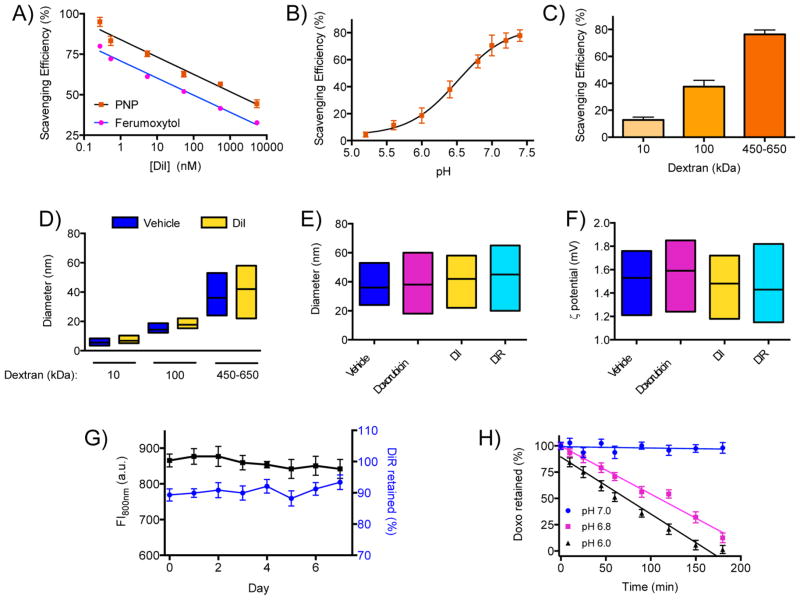Figure 3.
Retention of molecular cargo with PNPs. (A) The dextran PNPs were able to sequester more molecules of the hydrophobic fluorophore DiI from a mixed-solvent solution than dextran-coated nanoparticles that have an iron oxide core (Ferumoxytol). (B) The PNPs sequestered less cargo (DiI) in acidic conditions. (C) PNP of high-molecular-weight dextran scavenged more DiI, which was used as a model molecular cargo. (D) The retention of DiI by the PNPs did not affect their size and nanoparticle distribution. (E) PNPs loaded with different molecules had similar size distribution to unloaded nanoparticles (vehicle), and (F) their surface charge was unaltered. (G) Serum stability of DiR-loaded PNPs, indicating long-term retention of the cargo by the polymeric nanoparticles. (H) Acidification of the microenvironment led to rapid release of the cargo from the PNPs (Doxo = doxorubicin). Means ± SEM.

